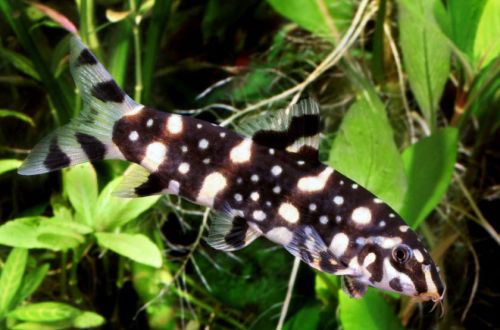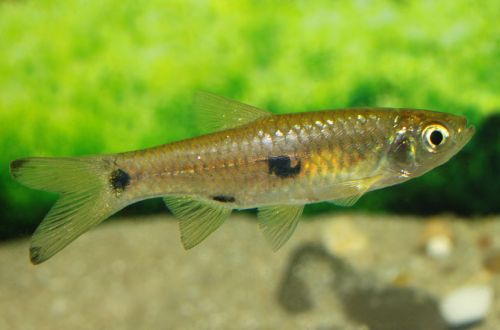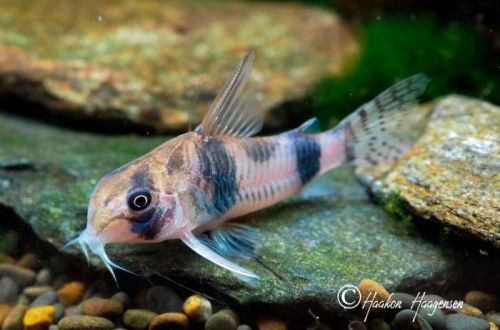
Chess Bocilia
Chess Bocilia or Botsia Kubota, the scientific name Botia kubotai, belongs to the family Cobitidae (Loaches). This fish became available in the hobby long before it was scientifically described, which led to some confusion with closely related species. For example, it is often sold as Bocilia Histrionica or Imperial Bocilia. It is considered easy to keep and unpretentious fish that does not require large time and material costs. Compatible with other tropical fish species. May be recommended for the beginner aquarist.

Contents
Habitat
It comes from Southeast Asia from the territory of the modern states of Burma and Thailand. It lives in the Salween River basin, which is a natural border between these two states. Also found in the rivers that merge in the delta with the Salun, these are Ataran and Gyaing.
The natural habitat is characterized by clear running water, sandy-pebbly substrates dotted with numerous snags.
Brief information:
- The volume of the aquarium – from 240 liters.
- Temperature – 22-28°C
- Value pH — 6.0–7.5
- Water hardness – soft (2-10 dGH)
- Substrate type – rocky or sandy
- Lighting – subdued / moderate
- Brackish water – no
- Water movement – moderate / weak
- The size of the fish is 14–15 cm.
- Food – any, preferably sinking food
- Temperament – peaceful
- Content in a group of at least 5–6 individuals
Description
Adult individuals reach a length of up to 15 cm. Sexual dimorphism is weakly expressed and manifests itself in the size of females and males, the latter are somewhat smaller. Body coloration consists of black and white colors, forming a pattern of symmetrical light spots, vaguely resembling a chessboard. A similar coloration is reflected in the name of this species of Goltsov.
Food
They take protein and plant foods. In a home aquarium, you can serve dry, live and frozen foods in combination with pieces of vegetables and fruits fixed on the bottom. For example, zucchini, apples, cucumbers, etc. are suitable. As an alternative, dry food with herbal supplements in the composition is quite acceptable.
Maintenance and care, arrangement of the aquarium
The optimal size of the aquarium for a group of 5-6 fish starts from 240 liters. Unpretentious and hardy look. The only important condition for maintenance is the high quality of water and its weekly replacement by 30-50% of the volume. It is recommended to provide a moderate current and a subdued level of lighting (optional).
The design of the aquarium is arbitrary and is a matter of personal taste of the aquarist. For Chess Bocilia, only the presence of shelters is important, which can be snags or any other decorative objects (wrecks, castles, etc.). When choosing plants, it is worth giving preference to shade-loving species. Mosses and ferns are considered a good option.
Behavior and Compatibility
A peaceful friendly species, the quiet pastime of which is sometimes replaced by peaks of activity, especially in the process of feeding. Botsia Kubota is compatible with many non-aggressive fish of comparable size. It is worth avoiding the introduction of fish with large veil fins in order to avoid accidental injury.
Intraspecific relationships are built on a hierarchy between strong and weak individuals. They prefer to be in a group of at least 5-6 individuals. Solitary content can provoke aggression towards the neighbors in the aquarium.
Breeding / breeding
At the time of writing, the successful breeding of Chess Bocilia in aquariums is a rare episodic phenomenon. The main breeding is carried out on commercial fish farms with the use of hormones to stimulate spawning.
Fish diseases
By their nature, non-ornamental fish species that are close to their wild relatives are quite hardy, have high immunity and resistance to various diseases. Health problems can be the result of inappropriate conditions, so before starting treatment, check the quality and parameters of the water. If necessary, bring all values back to normal and only then begin treatment, if necessary. Read more about diseases, their symptoms and methods of treatment in the section “Diseases of aquarium fish”.





